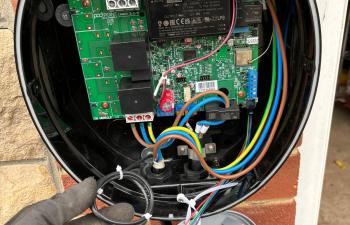Many people have heard the term RCD or RCBO but what does it actually mean and what does an RCD and RCBO do?
RCD stands for Residual current device. They offer a level of personal protection that ordinary fuses and circuit breakers cannot provide. In short, it’s a life saving device designed to prevent you from receiving a fatal electric shock should you come into contact with something live such as a bare wire. An RCD can also provide protection against electrical fires.
What does an RCD do?
An RCD is designed to protect against the risks of electrocution and fire caused by earth faults. An RCD is a sensitive safety device which switches off when a fault is detected.
For example, if a cable is accidently severed whilst in use and then then you come into contact with the live wires, an RCD would be constantly monitoring the electric current flowing though one or more of the circuits that it is used to protect. If the RCD detects electricity flowing down an unintended path such as a person who has come into contact with the live wire the RCD will switch the circuit off very quickly which will significantly reduce the risk of death or serious injury.
Are all RCD’s the same?
RCDs are a useful safety device which can protect you from electric shocks in potentially hazardous areas such as bathrooms and gardens and for this there are various RCDs available.
Fixed RCD’s
This type of RCD is installed in the Consumer Unit or fuse box. They provide the highest level of protection and protects all of the wiring and sockets on a circuit and any connected appliances. A fixed RCD can provide protection to an individual or group of circuits.
Portable RCDs
A portable RCD plug into any standard socket outlet. An appliance can then be plugged into the RCD. This does mean however that only to the person in contact with the equipment including the lead plugged into the portable RCD are protected. These are useful when neither a fixed nor socket outlet RCD is available.
Socket Outlet RCDs
This is a special socket outlet with the RCD built into them. They can be used in place of a standard socket outlet. Again, this type of RCD only provides protection to the person in contact with the equipment and lead plugged into the special socket outlet.
Although an RCD greatly reduces the risk of death or injury from electric shock this should not be used to replace care with electrical components. RCDS need to be tested and regularly maintained to ensure they are working correctly. Wiring should also be checked at least every 10 years and any faults with appliances or wiring should be dealt with by a registered electrician.






